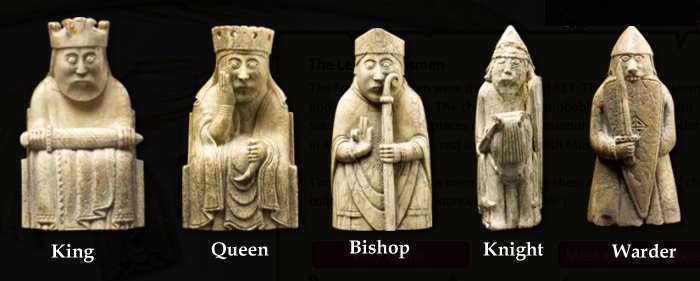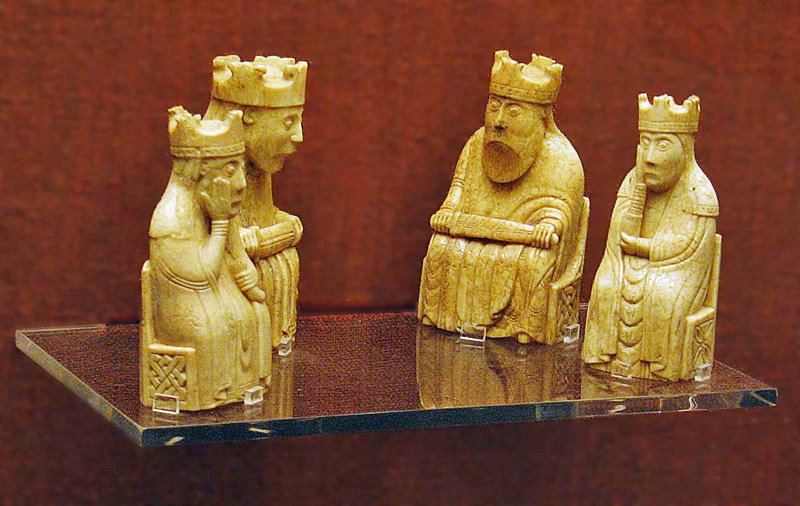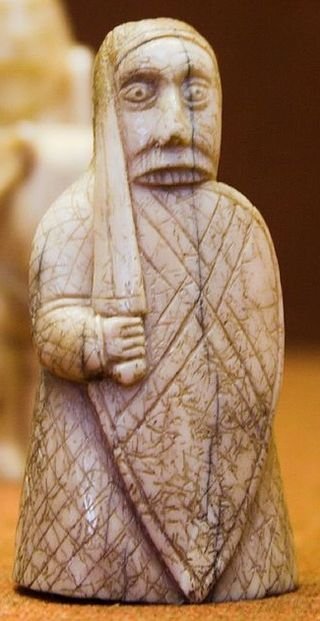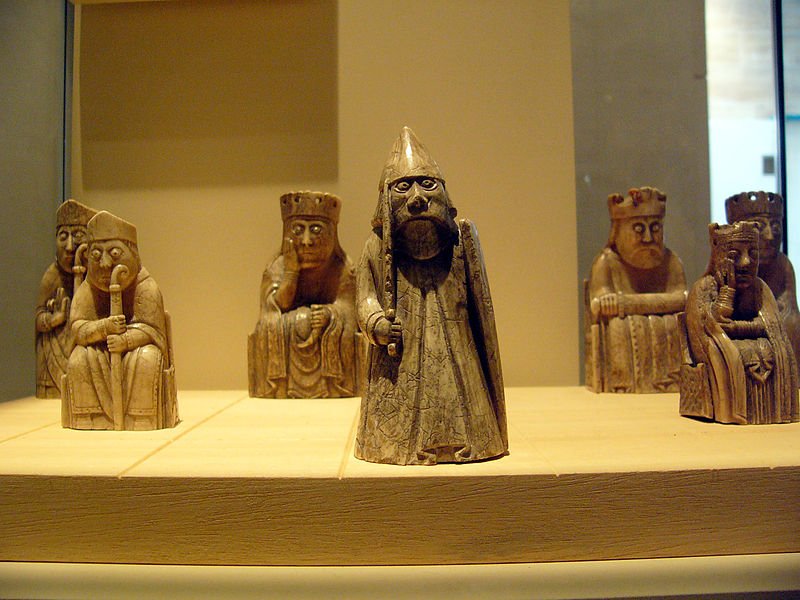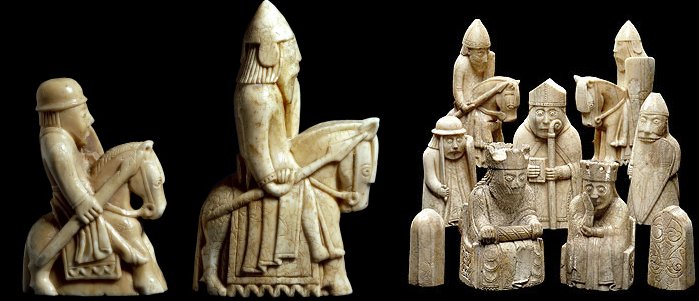Mystery Of The Beautiful Viking Uig Chessmen Found On The Isle Of Lewis, Scotland
Ellen Lloyd - AncientPages.com - On the beautiful Isle of Lewis in Scotland, many mysterious figures that today are known as the Uig Chessmen were discovered over 180 years ago.
The enigmatic Uig Chessmen, also known as Lewis Chessmen, are a legacy of the Vikings who once ruled over Scotland. The figures are unique masterpieces, and they have been described as the "greatest Chessmen of the European Middle Ages".
The true origin of the figures is still shrouded in mystery, but scientists who studied them are convinced they are of Norse origin. Based on the style of carving and dress, the pieces have been dated to the mid to late twelfth century.
The Discovery Of The Viking Chessmen
The Uig Chessmen were discovered in 1831 in a stone cist in the shifting dunes of Uig Bay at Ardroil, by Malcolm "Sprot" Macleod of the village of Pennydonald.
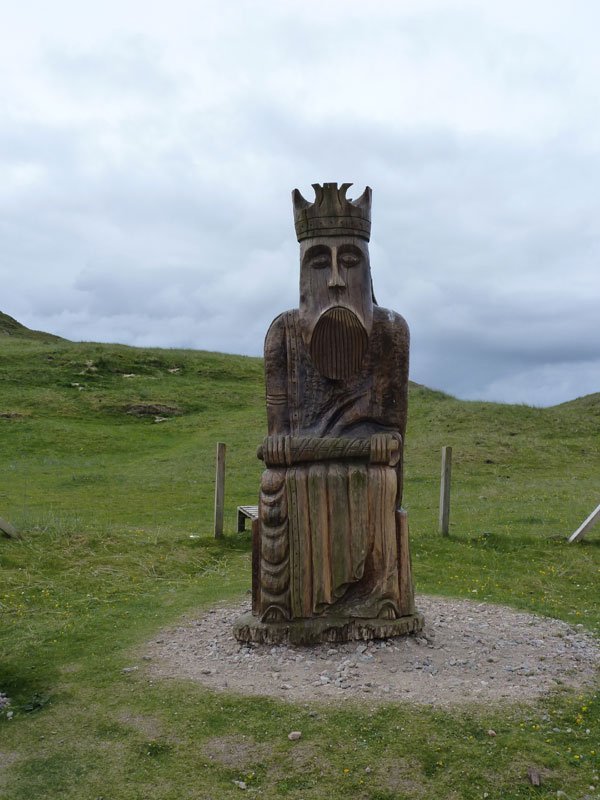
Uig Chessmen on the beach at Uig. Image credit: Isle of Lewis
The historically very important Viking chess set was placed inside a small stone chamber at the beach's edge.
What Are Uig Chessmen?
There were originally 93 gaming pieces known to us today. They include 78 chessmen, 14 tables men, and a buckle to secure a bag. The chess pieces were intricately carved from walrus tusk. They vary between 3.5cm and 10.2cm in height.
There were eight kings, eight queens, 15 knights, 16 bishops, 12 warders, and 19 pawns, perhaps indicating that there were eight sets. All the pieces are sculptures of human figures, except the pawns, which are geometric shapes and much smaller than the other pieces. Some of the chessmen found in Lewis were stained with red - and some historians say that this could have indicated that the chessboard may have been red and white instead of the black and white that is used nowadays.
Eleven chess pieces are in the National Museum of Scotland in Edinburgh, and 82 are in the British Museum in London.
Why Are The Uig Chessmen A Major Archaeological Discovery?
The Chessmen are one of the most significant archaeological discoveries ever made in Scotland, and they are of primary international importance.
"Berserker" rook, at the British Museum.
The construction of the Lewis Chessmen's began many centuries ago, high up in the Arctic Circle in the freezing waters of the Norwegian Sea. They were most likely made in Trondheim, Norway.
How the chess set ended up in the sandbank on the Isle of Lewis is unknown. Norse occupation of the Western Isles lasted for nearly five centuries, and the chessmen may have been hidden towards the end of our Viking period.
There is one interesting local story being circulated. It tells how the hoard was brought ashore much later by a young shipwrecked sailor, who made the mistake of telling a gillie he met in the hills what he was carrying. The dishonest gillie murdered the boy for the pieces and hid the pieces. He was later hanged for other crimes and allegedly confessed to the murder on the gallows.
Years later, Malcolm Macleod came upon the hoard of chessmen by chance. Rev Col AJ Mackenzie and a friend came across the bones of a boy in a cave in the hills and supposed they must have belonged to the young sailor. Whether this story is true remains unknown, but the ancient chessmen are very real.
Updated on June 8, 2022
Written by Ellen Lloyd - AncientPages.com
Copyright © AncientPages.com All rights reserved. This material may not be published, broadcast, rewritten or redistributed in whole or part without the express written permission of AncientPages.com
More From Ancient Pages
-
 Dearg-Due Frightening Female Demon And Tyrannical Abhartach Of Irish Folklore
Celtic Mythology | Jan 5, 2017
Dearg-Due Frightening Female Demon And Tyrannical Abhartach Of Irish Folklore
Celtic Mythology | Jan 5, 2017 -
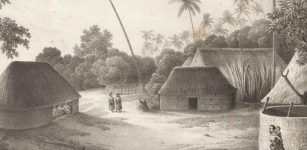 Impact Of European Contact With Pacific Islands Was Devastating – New Study Reveals
Archaeology | Sep 30, 2022
Impact Of European Contact With Pacific Islands Was Devastating – New Study Reveals
Archaeology | Sep 30, 2022 -
 Schoolboy Finds A Huge 3,000,000-Year-Old Megalodon Shark Tooth On British Beach
Archaeology | May 9, 2022
Schoolboy Finds A Huge 3,000,000-Year-Old Megalodon Shark Tooth On British Beach
Archaeology | May 9, 2022 -
 Are Priceless Ancient Gold Tablets Of The Serpent People Hidden Underground In Los Angeles?
Artifacts | May 24, 2014
Are Priceless Ancient Gold Tablets Of The Serpent People Hidden Underground In Los Angeles?
Artifacts | May 24, 2014 -
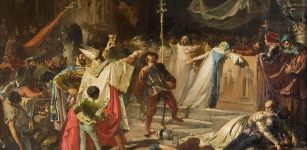 On This Day In History: Sack Of Rome Took Place on May 6, 1527
News | May 6, 2016
On This Day In History: Sack Of Rome Took Place on May 6, 1527
News | May 6, 2016 -
 Bronze Age Royal Tombs Unearthed In Ruins Of Ancient City Of Pylos, Greece
Archaeology | Dec 30, 2019
Bronze Age Royal Tombs Unearthed In Ruins Of Ancient City Of Pylos, Greece
Archaeology | Dec 30, 2019 -
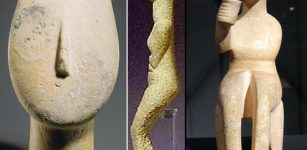 The Cyclades And Their Mysterious Society Lost In Time
Civilizations | Feb 4, 2016
The Cyclades And Their Mysterious Society Lost In Time
Civilizations | Feb 4, 2016 -
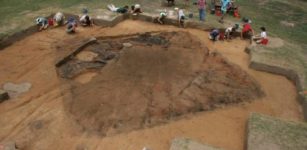 Archaeological Discoveries At Fort San Juan Reveal Hidden History Of Conquistadors In American South
Archaeology | Mar 12, 2018
Archaeological Discoveries At Fort San Juan Reveal Hidden History Of Conquistadors In American South
Archaeology | Mar 12, 2018 -
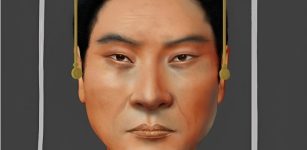 Facial Reconstruction Of Chinese Emperor Wu Who Lived 1,500 Years Ago
DNA | Mar 29, 2024
Facial Reconstruction Of Chinese Emperor Wu Who Lived 1,500 Years Ago
DNA | Mar 29, 2024 -
 Unearthing South Australia’s Oldest Known Shipwreck: The Bark South Australian (1837)
Archaeology | Aug 16, 2023
Unearthing South Australia’s Oldest Known Shipwreck: The Bark South Australian (1837)
Archaeology | Aug 16, 2023 -
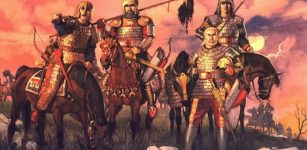 Will Ancient DNA Unravel History Of The Scythians From Central Asian Steppe?
Archaeology | Mar 29, 2021
Will Ancient DNA Unravel History Of The Scythians From Central Asian Steppe?
Archaeology | Mar 29, 2021 -
 Unsolved Mystery Of The Aleppo Codex And Its Missing Pages: One Of The World’s Most Precious Ancient Books
Artifacts | Feb 27, 2017
Unsolved Mystery Of The Aleppo Codex And Its Missing Pages: One Of The World’s Most Precious Ancient Books
Artifacts | Feb 27, 2017 -
 Mysterious 11,000 – Year-Old Tower Of Jericho: Was World’s First Skycraper A Symbol Of Power Or An Ancient Time-Keeping Device?
Civilizations | Aug 11, 2021
Mysterious 11,000 – Year-Old Tower Of Jericho: Was World’s First Skycraper A Symbol Of Power Or An Ancient Time-Keeping Device?
Civilizations | Aug 11, 2021 -
 Unexpected Danger Lurks Beneath Ancient Maya Cities – Mercury Pollution Discovered
Archaeology | Sep 23, 2022
Unexpected Danger Lurks Beneath Ancient Maya Cities – Mercury Pollution Discovered
Archaeology | Sep 23, 2022 -
 Two 1,800-Year-Old Sarcophagi Of Wealthy People Accidentally Found At Ramat Gan Safari Park
Archaeology | Feb 22, 2021
Two 1,800-Year-Old Sarcophagi Of Wealthy People Accidentally Found At Ramat Gan Safari Park
Archaeology | Feb 22, 2021 -
 On This Day In History: Famous Inventor Thomas Edison Died – On Oct 18, 1931
News | Oct 18, 2016
On This Day In History: Famous Inventor Thomas Edison Died – On Oct 18, 1931
News | Oct 18, 2016 -
 Bizarre Sound Of A Crash Remains An Unexplained Mystery
Featured Stories | Oct 22, 2020
Bizarre Sound Of A Crash Remains An Unexplained Mystery
Featured Stories | Oct 22, 2020 -
 Legend Of Gyanganj – Antediluvian City Of Immortal Sages That Can Only Be Found By The Chosen Ones
Featured Stories | Jul 29, 2017
Legend Of Gyanganj – Antediluvian City Of Immortal Sages That Can Only Be Found By The Chosen Ones
Featured Stories | Jul 29, 2017 -
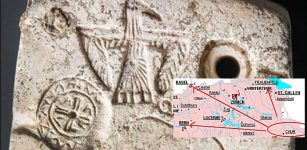 1,000-Year-Old Multi-Shaped, Double-Sided Mold For Jewelry Found In Swiss City Of Chur
Artifacts | Jul 26, 2020
1,000-Year-Old Multi-Shaped, Double-Sided Mold For Jewelry Found In Swiss City Of Chur
Artifacts | Jul 26, 2020 -
 Why Was Lovesickness A Feared Disease During The Middle Ages?
Ancient History Facts | Feb 8, 2018
Why Was Lovesickness A Feared Disease During The Middle Ages?
Ancient History Facts | Feb 8, 2018

